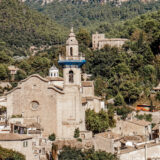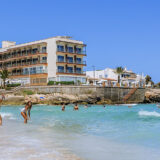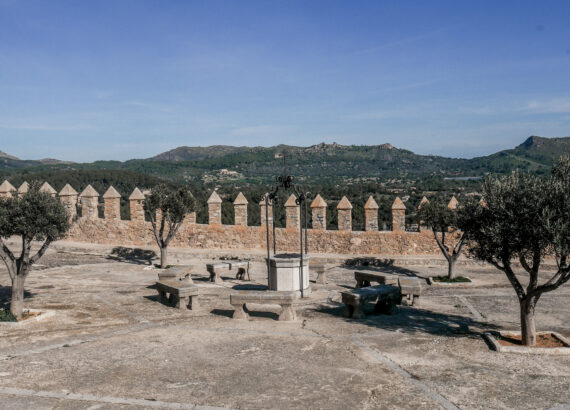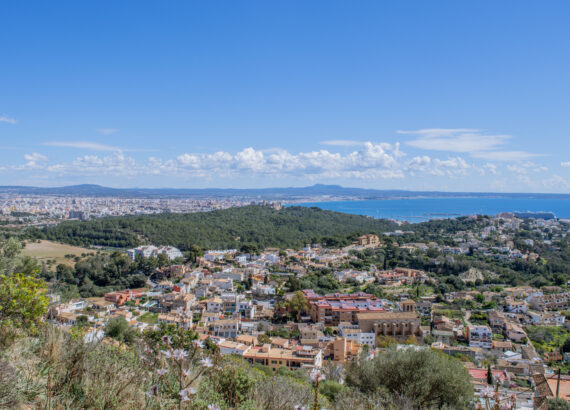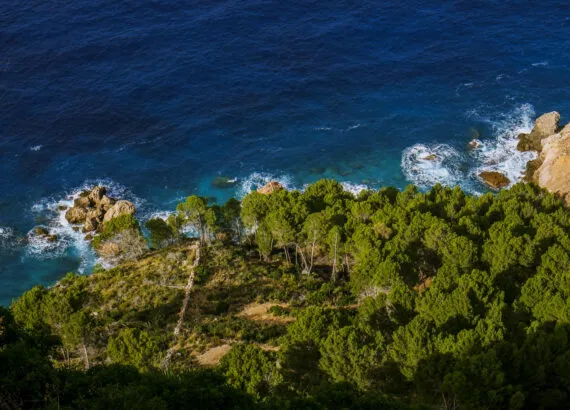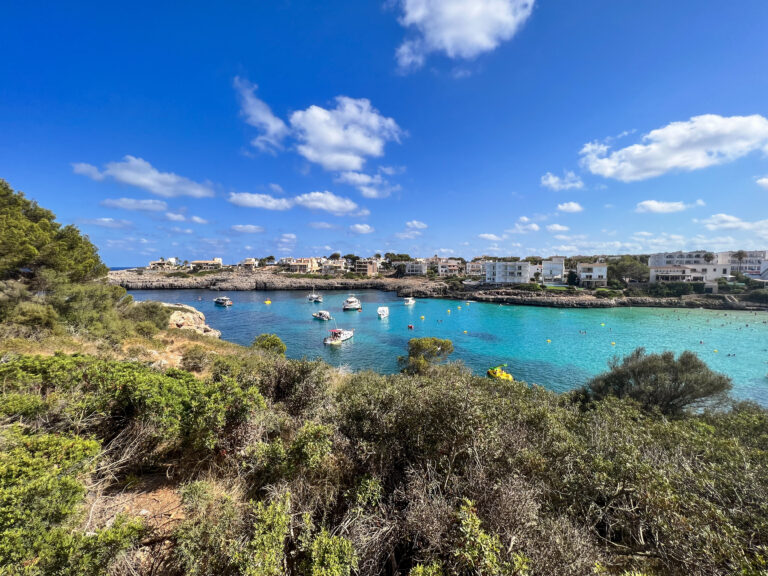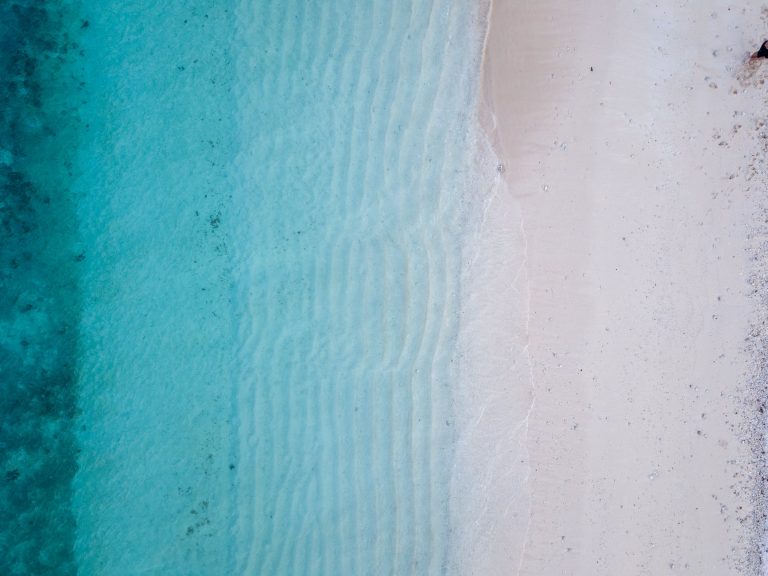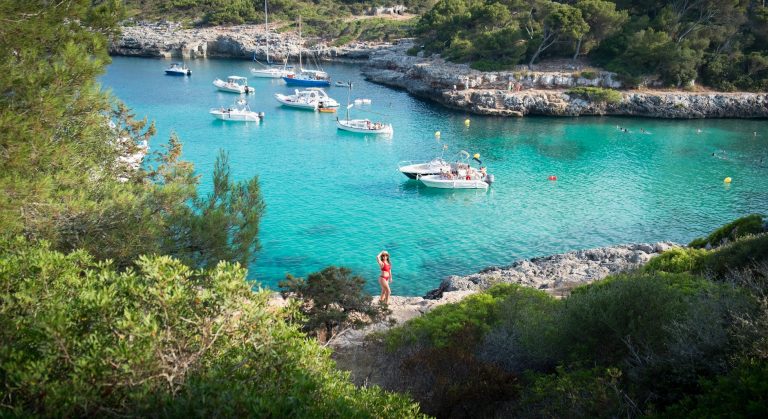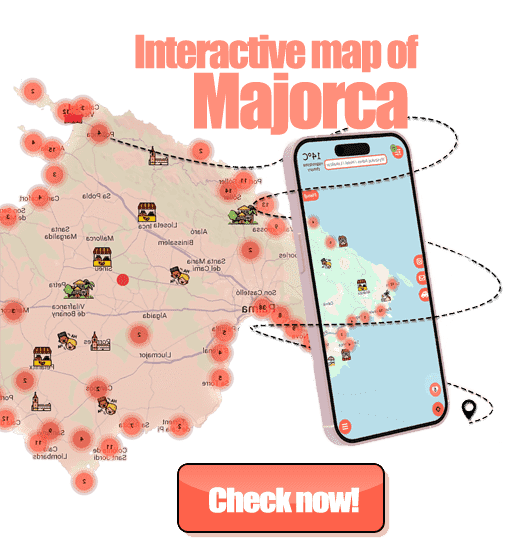Castell de Capdepera in Mallorca – all you have to know before your visit
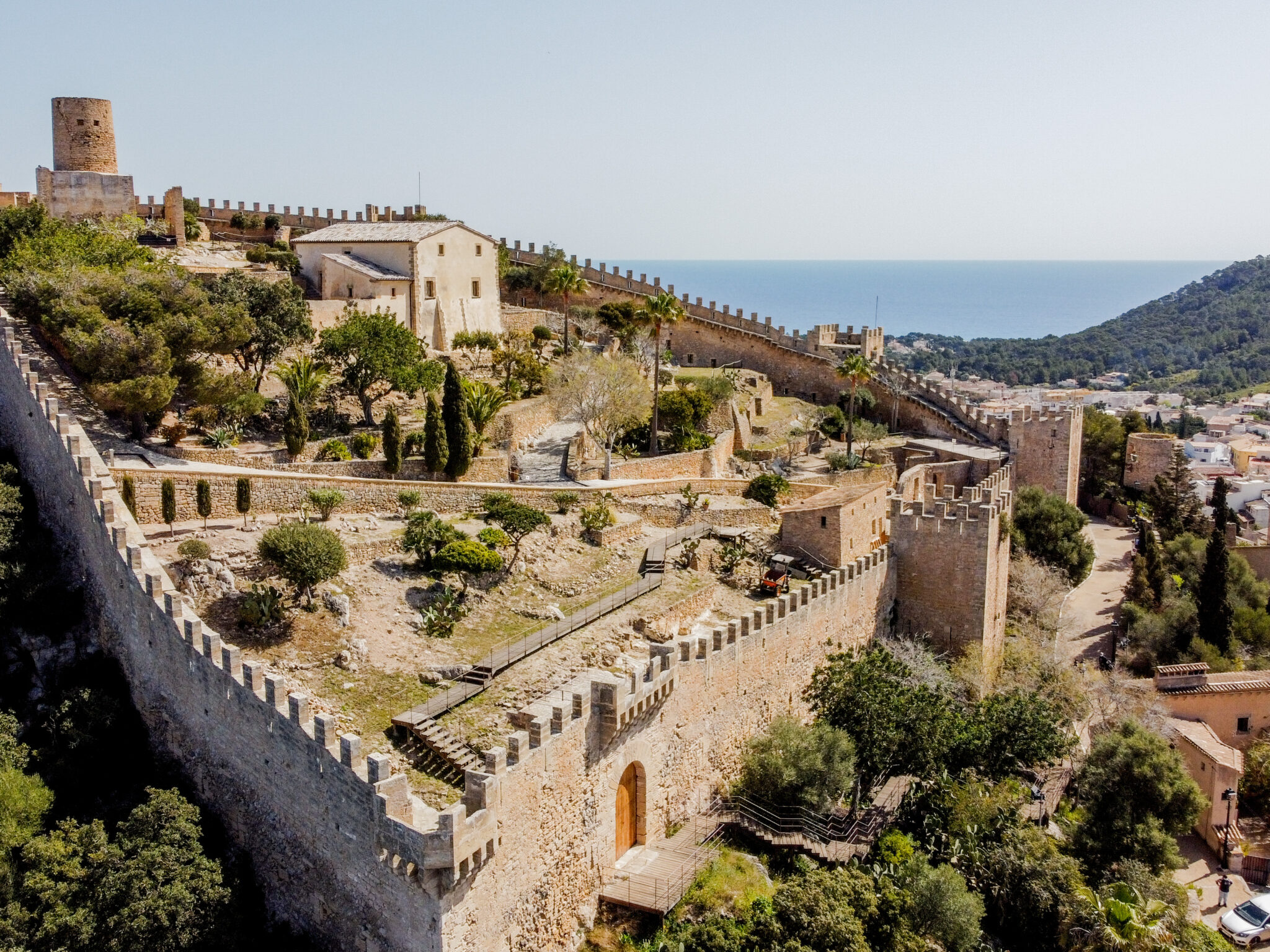
Weather in Castell de Capdepera
Castell de Capdepera in Mallorca
Castell de Capdepera in Mallorca is a large castle in the north-east of the island, in the town of Capdepera. This castle can be seen from afar. Situated on a hill, with views over the entire town and coast. On a good day, you can see the neighboring island of Menorca from its walls. In addition, the castle in Capdepera hides many secrets, and its walls are saturated with the stories of local residents who were attacked by pirates, among others.
If you are going to the north-east of Mallorca, to areas such as Cala Ratjada, Cala Agulla, Sa Coma, or Canyamel, I highly recommend visiting this castle. It is well-preserved, and the town of Capdepera itself is an ideal place for later plans – a walk, lunch, or shopping. I recommend visiting especially on Wednesdays, when the local market is set up in the town. From 9:30 to 13:00.
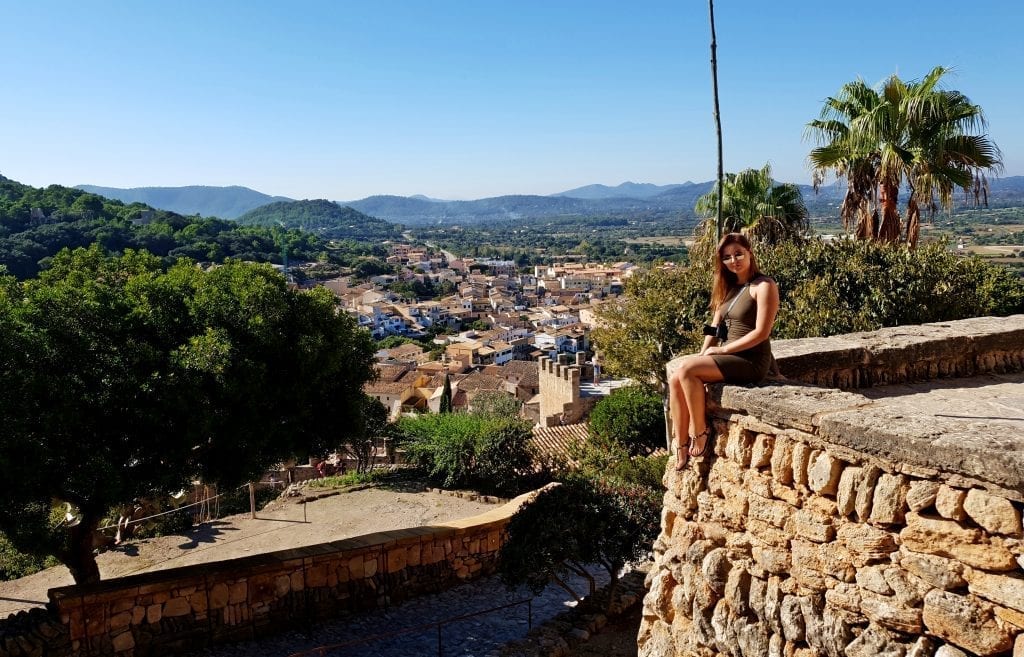
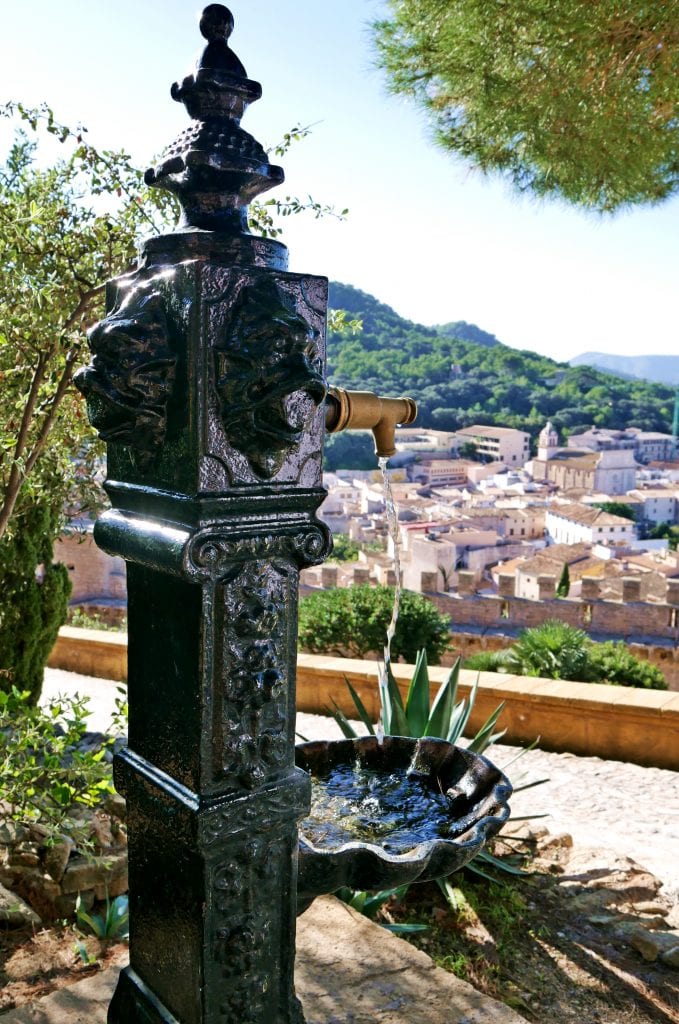
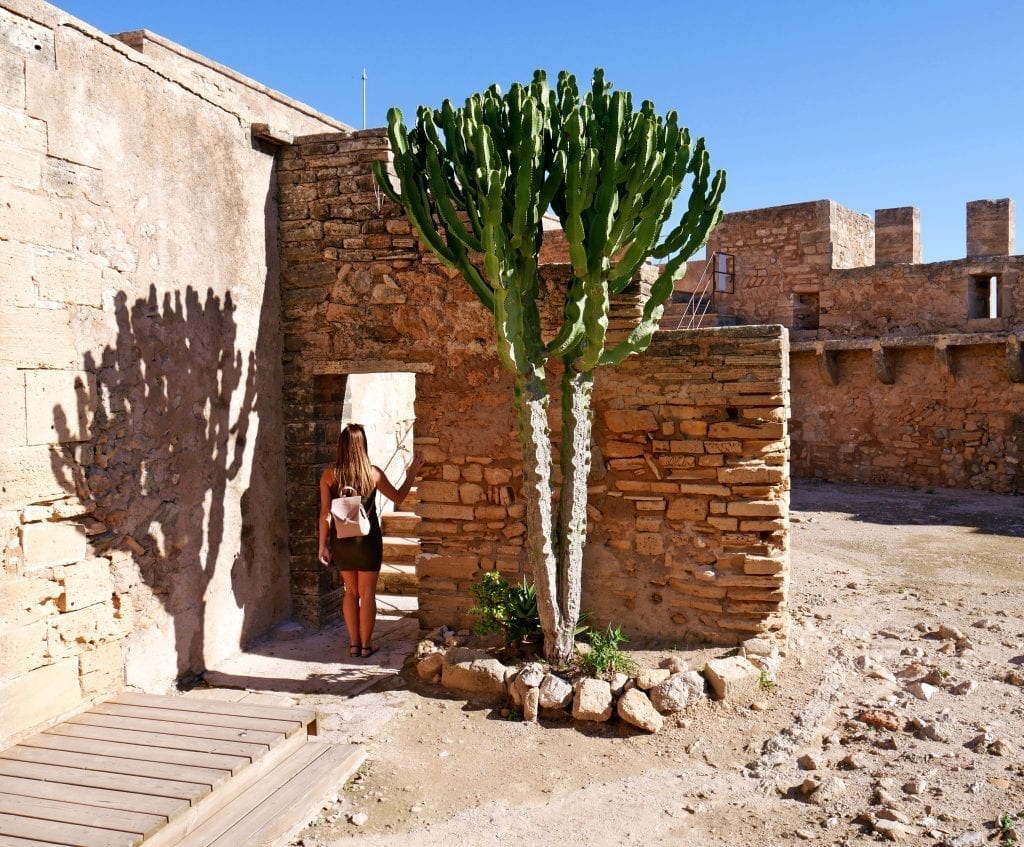
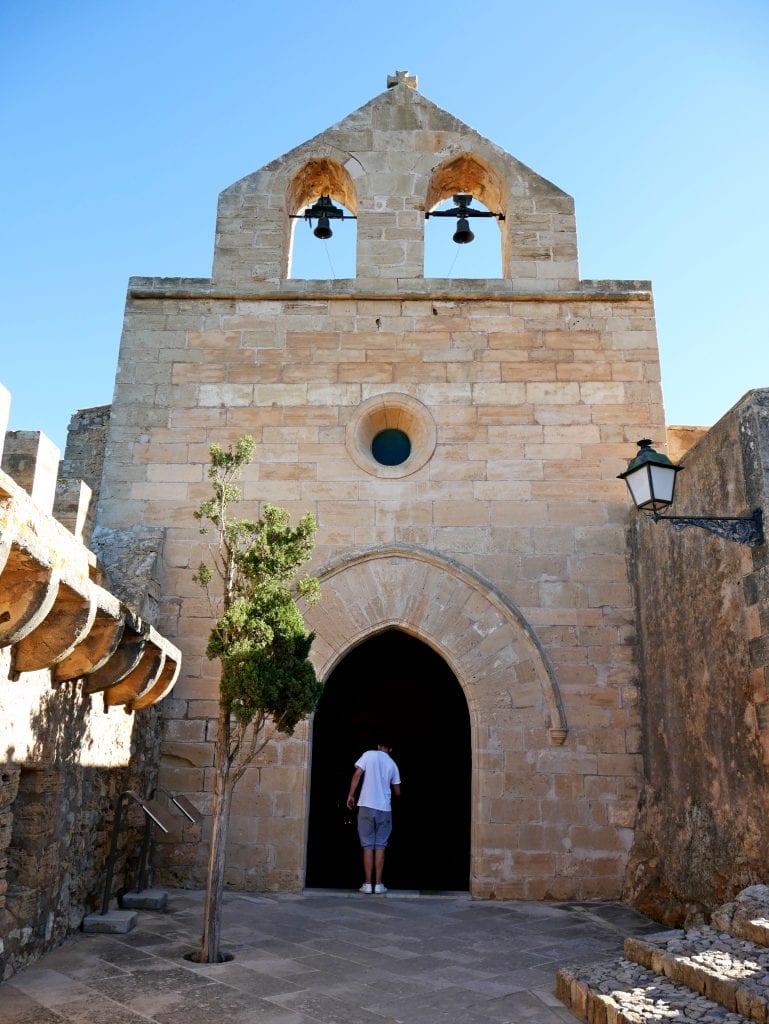
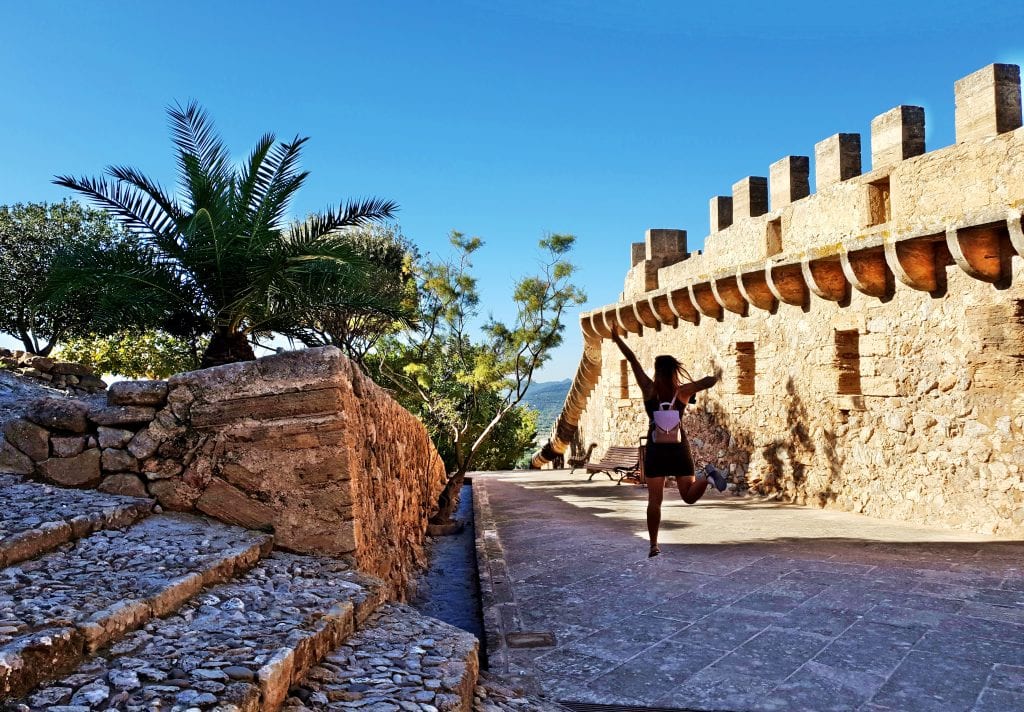
Capdepera in Mallorca
Capdepera is a beautiful city! It is full of narrow streets. Charming steps, houses surrounded by flowers. A very romantic place, also in the evening. Then, in the evenings, locals sit under the castle walls. They go for a walk there. And I don’t blame them, it is really beautiful there. There is a small church in the castle, and in one of the rooms you will see one of the oldest professions of the island, which is weaving baskets and other accessories from the leaves of a species of palm tree. In the display cases there is a whole exhibition of products made of this material. From baskets, through baby carriers, ending with saddles.
Sometimes in this room there is a person who creates objects live from a suitably prepared plant. We also came across an owl show, although this is not a guaranteed attraction of a visit to the Capdepera castle.
Prices and opening hours of Castell de Capdepera in Mallorca
The entrance fee is 4 euros per person. The price is not excessive. I think it is very proportional to what you see there. The castle is open all week. In winter and summer. However, the opening hours change.
November – March: 10:00 – 17:00
April – May: 10:00 – 19:00
June – September: 10:00 – 22:00
October – 10:00 – 19:00
The exception is January, when the castle is closed to visitors. And a few days a year, such as:
the third Thursday in May
6,8,24,25,31 December
Additionally, on the third weekend of May, a themed market is set up in the castle!
History of the Castell de Capdepera in Mallorca
The Castle of Capdepera is still an archaeological site. It is still being discovered. The southern area of the wall, between the entrance gate and the Rei en Jaume gate, is the part of which most of it remains a mystery. There are remains of houses on the castle grounds, only some of which have been excavated and restored for tourists. Since ancient times, the steep slope of the terrain has required the construction of retaining walls in the area. Archaeological research allows us to learn about the history of the castle: how the inhabitants lived, how they survived attacks or how they defended themselves, and also to get to know the walled city that we have under our feet.
The current appearance of Capdepera Castle in Mallorca
The current appearance of the castle bears little resemblance to its original appearance. The fortified town was a labyrinth of houses and alleys where the population hid in case of attack, leaving their lands and property outside, at the mercy of the enemy. Fear and anger must have been the daily life of the inhabitants, during the sieges. The defensive system of the territory – along the coast of Capdepera there were watchtowers built in the 12th-16th centuries.
The earliest of these buildings have disappeared, and the towers we see today were built in the 16th century. The system of signals and codes consisted of linking a series of warnings. Passed from tower to tower from the place where the enemy was first seen. In order to organize the defense and send help to any place on the island that was under attack. In the 16th and 17th centuries, optical signals were produced by smoke during the day and fire at night.
Elements of the Capdepera Castle
Miquel Nunis Tower. Defensive tower dating from the Muslim period (10th – 12th century). Located in a strategic point – the highest point on the wall – it dominated the view of the Menorca Channel (the channel between Majorca and Menorca). It is built using the “tapia” masonry technique – walls made of pressed earth mixed with water set in wooden formwork and dried in air. Some of the gaps are still visible. This is the original structure around which the fortified city was built. In 1231, the Treaty of Capdepera was signed here with the Muslims of Menorca. In the 19th century, a mill was built here with a round tower and a spiral staircase that is still preserved.
Capdepera Treaty
In 1231, two years after the conquest of Majorca, King Jaume visited Capdepera to conquer Minorca. To secure the support of the Arabs, he devised the following ruse: one night he lit fires at more than three hundred points along the hill. They seemed to be preparing a large army for battle. They were seen from a neighboring island. The messengers informed the Saracens that this was a Christian king who was preparing to invade Minorca. The operation was repeated for several evenings until the Saracens agreed to sign a document in which they submitted to the authority of King Jaume I. The king thus secured the surrender of the Muslims without bloodshed. This document is known as the Treaty of Capdepera and is considered the oldest peace treaty still in force today.
The Legend of Lady Hope – “Mave de deu de L’esepranca”.
The chapel had a painting of Our Lady of Hope (1569 – a period in which there were many attacks by Turkish pirates). Legend has it that when a large group of Maslems arrived on the coast, the inhabitants of the Castle took the Mother of God and prayed, walking around the inside of the walls, begging her for protection. After a while, a thick fog appeared, which spread over the area, making it difficult for the Muslims to regroup and attack. This event is celebrated every December 18, on the day of Hope. Few people visiting the castle are interested in its history. Many of us go there to enjoy the beautiful views. We do not realize what a nightmare the people living in these areas must have experienced. How much blood was shed there. How hard it was for them in the winter and during the downpours. The roles in the castle were divided. Each day meant work. Everyone had a role that they had to perform. Otherwise, there would be no warmth, food, water, homes, children.
Is Castell de Capdepera in Mallorca worth visiting?
And not only that. The whole city is beautiful. The castle area is very picturesque. The whole city is one big story. It’s definitely worth going there. And here’s the castle’s website: http://www.capdeperacastell.com/.
What to do around Castell de Capdepera in Mallorca?
Cala Morlanda: The most beautiful bay in the area. Rocky, unguarded, but with the most stunning water colors and views. It’s about a 20-minute walk from Sa Coma. Once you step into the water, the bottom is just sand. Right next to it is another bay for nudists, called Cala Rafalino.
Cala Millor: The largest town nearby, with the longest beach and the biggest selection of accommodation and shopping options. A pleasant promenade, ideal for a bike ride.
Canyamel: Known for its beautiful beaches, charming coves, and the peaceful atmosphere of this part of the island. It’s the perfect place for those looking for relaxation away from the bustle of big cities. The Arta caves are located here.
Cala Ratjada: A popular tourist town known for its beautiful beaches, lively nightlife, and wide range of dining and shopping options. The best beach in the area is Son Moll.
Cala Gat: One of the most beautiful coves on this side of the island. A small, sandy beach, low cliffs, and crystal-clear water. An ideal place for a quick swim and a stroll along the promenade with stunning views.
Sa Font de Sa Cala: A charming, small, and quiet town with a few shops and hotels. There’s a small main beach with services, but I recommend a slightly more remote beach without a name. Find the location here.
Far de Capdepera: The easternmost point on the island, decorated with a lighthouse due to its strategic location. It’s closed to visitors, but the views from here extend across the entire northeastern coast.
Cala Agulla: One of the most famous beaches in Mallorca. A long, sandy beach with parking, facilities, and beach bars. Plenty of water activities and a beautiful color of the water make this place a popular choice.
Cala Moltó: A wild cove right next to Cala Agulla, a 10-minute walk away. Cala Moltó is also a nudist beach. There are no facilities, making it a truly natural place with crystal-clear water.
Cala Mesquida: A very interestingly located sandy beach. Cala Mesquida lies in a valley, and right behind it, you’ll find beautiful low sand dunes. The beach has full services, many water activities, a beach bar, and free parking.
Cuevas de Arta: One of the most popular caves in Mallorca, located in a massive cliff right above the sea, with stunning views of Canyamel Bay.
Information: Near Castell de Capdepera, there are also other beaches and coves that you cannot access by car, such as Cala Torta. Clicking on the name will show you the location of the place. If you’re looking for information about such beaches, type the name in the search field on my blog and read the post.
Manacor: This is the largest town in the Sa Coma area, known primarily for the production of Majorica pearls. On Mondays, there is a market here, from 9:00 to 13:30. There is also a Rafael Nadal museum, you can buy tickets here. There is also a museum in the city dedicated to the history of Manacor.
Porto Cristo: This charming town situated by the sea is famous for its beautiful caves. It is worth visiting the Drach caves, or Hams where you can admire stalactites, stalagmites and an underground lake. There is also an attraction for children – Dinosaurland. Find out the prices and offers here. In the port of Porto Cristo there is also a catamaran of Rafael Nadal, which was manufactured in the shipyard in Gdansk. A large house on a cliff in brown color is the residence of the tennis player.
Son Servera: Every Friday from 9:00 to 13:30 there is a local market where you can buy fresh produce, souvenirs or clothes. It is a small but very charming and pleasant to the eye town, which I highly recommend visiting. Apart from the market, be sure to visit the unfinished church Eglesia Nova.
Cala Millor: The largest town in the immediate vicinity, with the longest beach and the largest accommodation and shopping offer. A pleasant promenade, an ideal option for a bike trip.
Talaiotic remains – both in the town Cala Morlanda as well as the nearby town s’Illot there are remains of prehistoric towns Talaiot. You can admire them completely free of charge in both towns. You can find the locations by clicking on the above names of towns.
Looking for more recommendations? Contact me!
Got Questions?
Want to know more about preparing for your dream holidays in Mallorca? Want to rent a car without deposit, or book a tour with english guide? Looking for information on the best shopping spots, local cuisine, or practical tips? ☀️ Contact me on Instagram or Facebook! I’ll answer all your questions and share the latest updates. On my blog, you’ll find many helpful articles to help you plan an unforgettable holiday. Check out the TOP 10, GUIDES categories to discover the island’s most beautiful spots and learn more about it. Make your holidays in Mallorca the best time of your life!
Get in Touch
If you need help planning your holiday in Mallorca or have any questions, message me – I’d be happy to advise on what to focus on when planning your trip.
Follow me on Instagram, where I post daily stories straight from Mallorca. Join to stay updated on life on this magical island!
Instagram: https://www.instagram.com/balearaiso/
🌴 ❗ THIS WILL INTEREST YOU ❗ 🌴
Itineraries, Ebooks, Map + Planner!
Book with a discount of up to -10%!
An interactive map linked to Google Maps!
With the code “MAJORKA5” -5% on all attractions!
Find the place for the perfect meal!
Find the best hotel in Mallorca!
Let’s do something extraordinary!

